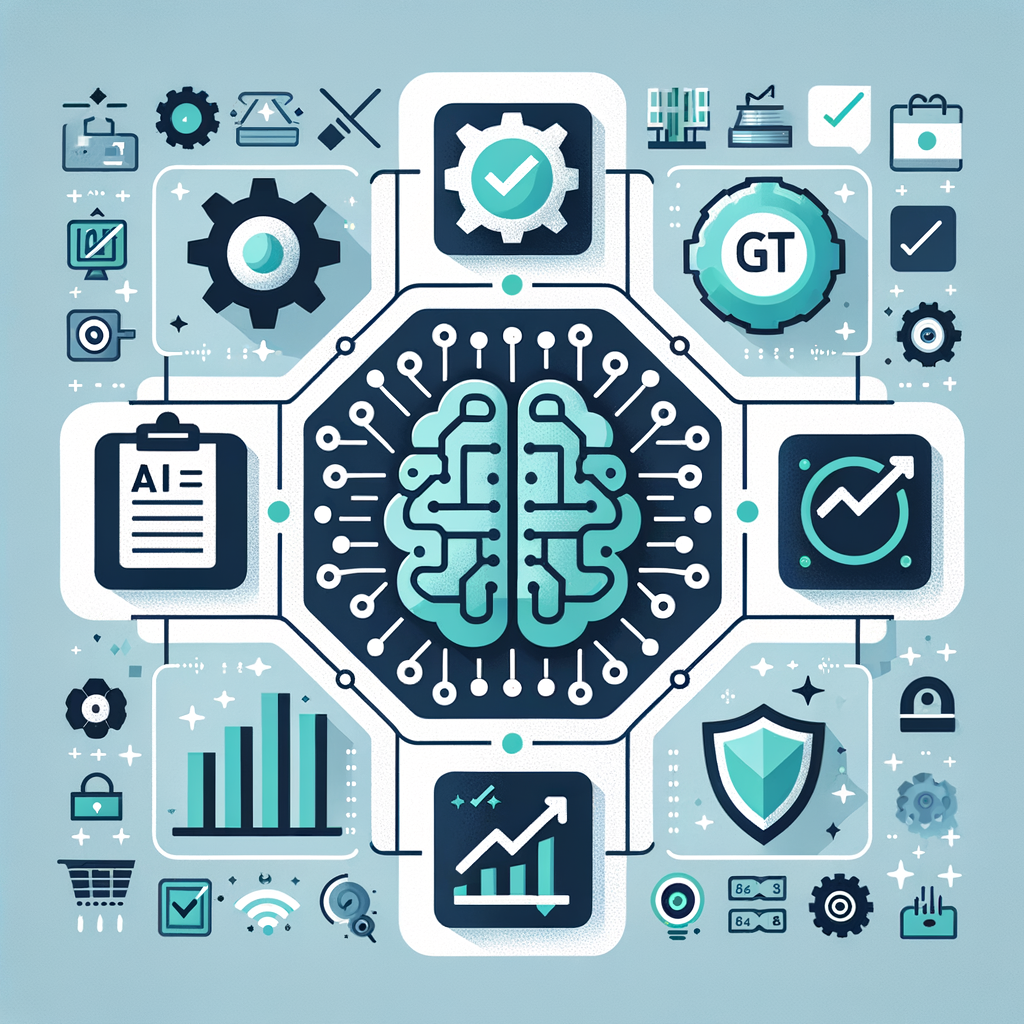How AI and Machine Learning Are Revolutionizing GST Processes in India
Since its introduction, navigating the Goods and Services Tax (GST) has been a significant challenge for many Indian small business owners and salaried professionals. The complexity of filing returns, reconciling invoices, and staying compliant can feel overwhelming. However, a powerful technological shift is underway, and the way AI is revolutionizing processes related to GST is making this landscape far more manageable. This transformation, driven by Artificial Intelligence (AI) and Machine Learning (ML), is not just a futuristic concept; it’s happening now. The ongoing wave of AI technology transforming business India is directly impacting tax compliance, turning tedious tasks into automated, efficient workflows. This article will explore the specific ways AI and ML are reshaping GST compliance, making it more accurate and less time-consuming for businesses of all sizes.
Understanding the GST Challenge for Indian Businesses
To appreciate the impact of AI, it’s essential to first understand the core challenges it helps solve. GST compliance is a multi-layered process that demands precision and consistency. For small businesses with limited resources, managing these layers manually can be a significant drain on time and productivity, often leading to costly errors and compliance issues that divert focus from their primary growth objectives.
The Intricacies of GST Filing
At its core, GST is divided into three main components: Central GST (CGST), State GST (SGST), and Integrated GST (IGST), depending on whether a transaction is within a state or between states. Businesses are required to file multiple returns, most notably GSTR-1 (for outward supplies) and GSTR-3B (a summary return of sales and taxes payable). A crucial element of this system is the Input Tax Credit (ITC), which allows businesses to claim credit for the GST they paid on their purchases and inputs. To claim ITC accurately, every purchase invoice must be meticulously reconciled with the data auto-populated by the government in forms like GSTR-2A and GSTR-2B. Knowing how to file GST returns online is a fundamental part of this process. Any mismatch can result in the loss of credit, directly impacting the company’s cash flow and profitability.
Common Pain Points for Small Businesses
Without technological assistance, managing GST compliance presents several significant hurdles for small and medium-sized enterprises (SMEs), reflecting the broader impact of GST on small and medium enterprises:
- Manual Data Entry: The process of manually entering hundreds or thousands of invoice details into accounting software is not only incredibly tedious but also highly susceptible to human errors, such as typos or incorrect GSTIN entries.
- Time-Consuming Reconciliation: Matching purchase invoices with GSTR-2A/2B data is a painstaking task. A single mismatch can trigger a lengthy investigation to find the source of the discrepancy, consuming valuable man-hours.
- Frequent Regulatory Changes: The GST framework is dynamic, with the government frequently issuing new notifications, circulars, and amendments. Keeping track of these changes and ensuring compliance is a constant challenge for business owners who are not tax experts.
- Risk of Penalties and Notices: Incorrect filings, late submissions, or discrepancies in ITC claims can attract penalties, interest, and scrutiny from tax authorities, leading to financial losses and legal complications.
How AI is Revolutionizing Processes for GST Compliance
This is where AI and Machine Learning step in, offering powerful solutions to the very pain points that plague businesses. By automating and intelligentizing compliance tasks, these technologies are transforming GST from a manual burden into a streamlined, data-driven function. This shift highlights how AI is revolutionizing tax filing and compliance by introducing unprecedented levels of efficiency and accuracy into the system.
Automated Data Entry and Reconciliation
One of the most immediate impacts of AI is the elimination of manual data entry. AI-powered Optical Character Recognition (OCR) technology can automatically scan and read various invoice formats—be it PDFs, JPEGs, or scanned documents. The software intelligently extracts key information like the supplier’s GSTIN, invoice number, date, taxable value, and GST amounts, and populates it directly into the accounting system. This not only saves countless hours of labor but also dramatically reduces the risk of data entry errors. The system can even be trained to handle different invoice layouts, making it a versatile tool for any business that deals with multiple vendors.
Intelligent Invoice Matching for Maximum ITC
The machine learning impact GST India is most profoundly felt in the area of Input Tax Credit reconciliation. Manually matching thousands of invoices is nearly impossible for larger businesses and a significant chore for smaller ones. ML algorithms, however, can process massive datasets in seconds. They intelligently compare the purchase data in your books with the data present in your GSTR-2B, performing a three-way match between the invoice, your accounting records, and the government portal’s data.
The system can:
- Instantly flag mismatches in invoice numbers, dates, or tax amounts.
- Identify duplicate entries to prevent incorrect claims.
- Highlight missing invoices that are present in GSTR-2B but not in your books, ensuring you don’t miss out on eligible ITC.
This intelligent automation ensures that businesses can confidently claim the maximum ITC they are legally entitled to, directly boosting their bottom line.
Predictive Analytics for Tax Planning & Anomaly Detection
Beyond simple automation, AI brings predictive capabilities to the table. By analyzing historical transaction and filing data, AI models can forecast a company’s future GST liabilities with a high degree of accuracy. This insight is invaluable for effective cash flow management and financial planning, allowing businesses to set aside the necessary funds for their tax obligations well in advance. Furthermore, AI systems are exceptional at anomaly detection. They can identify unusual transaction patterns or deviations from historical norms that might trigger a red flag with tax authorities. By flagging these potential issues proactively, businesses can investigate and rectify them before filing their returns, significantly reducing the risk of receiving a notice or undergoing a tax audit.
The Tangible Benefits for Your Business
Adopting AI-powered tools for GST compliance isn’t just about using fancy technology; it’s about generating real, measurable benefits that contribute directly to your company’s health and growth.
Increased Accuracy and Reduced Errors
By automating data entry and reconciliation, AI minimizes the human element that often leads to mistakes. This ensures that your GST returns are accurate and your ITC claims are precise, safeguarding your business from the financial repercussions of errors.
Significant Time and Cost Savings
Think of the hours your team spends on manual data entry, invoice matching, and preparing GST returns. AI automates these repetitive tasks, freeing up your valuable human resources to focus on strategic initiatives like business development, customer service, and innovation. This translates to direct cost savings and enhanced productivity.
Enhanced Compliance and Peace of Mind
AI-powered GST software is constantly updated to reflect the latest tax laws and regulations. This ensures that your filings are always compliant with current rules, drastically reducing the risk of penalties, interest, or legal trouble. This proactive compliance provides invaluable peace of mind for business owners.
Data-Driven Financial Decisions
The data organized and analyzed by AI tools offers a wealth of financial insights. You can generate detailed reports on sales trends, purchasing patterns, and ITC utilization. This information empowers you to make smarter, data-driven decisions that can optimize your operations and improve financial planning.
The Future of GST with AI in India
The integration of AI into the GST ecosystem is still evolving, and the future holds even more exciting possibilities for both taxpayers and tax authorities.
The Government’s Adoption of AI and Analytics
It’s important to recognize that businesses are not the only ones adopting this technology. The Goods and Services Tax Network (GSTN), the IT backbone of the GST regime, heavily relies on AI and advanced analytics to scrutinize returns and identify tax evasion. By analyzing vast amounts of data, the GSTN can detect fraudulent ITC claims and non-compliant taxpayers. This makes it more critical than ever for businesses to ensure their own filings are impeccable, a task made easier with AI tools. For more information, you can always refer to the official GST Portal.
What to Expect Next: ML Advancements in GST Processes
The future of GST with AI India points towards even deeper integration and automation. We can anticipate several ML advancements in GST processes, including:
- AI-Powered Chatbots: Imagine having a 24/7 assistant that can answer your specific GST-related queries in real-time, guiding you through complex compliance questions instantly.
- Real-Time Compliance Checks: Future systems may be able to analyze transactions as they happen, flagging potential compliance issues before an invoice is even generated.
- Fully Automated E-Way Bills and E-Invoicing: AI could further streamline logistics by automatically generating e-way bills based on invoice data and fully managing the e-invoicing process with minimal human intervention.
Conclusion
The shift towards technology-driven tax compliance is undeniable. The way AI is revolutionizing processes in the GST domain is transforming a once-dreaded task into a strategic, automated, and efficient business function. By embracing AI and ML, Indian businesses can not only ensure accuracy and compliance but also unlock valuable time and resources to focus on what truly matters: growth and innovation. This technological evolution is leveling the playing field, making robust tax management accessible and affordable for every Indian business.
Contact TaxRobo today to learn how our technology-driven services can simplify your GST and accounting needs.
Frequently Asked Questions (FAQs)
1. Is AI-based GST software affordable for a small business?
Yes, absolutely. Many modern cloud-based solutions, including those offered by service providers like TaxRobo, operate on a scalable subscription model. This makes them highly cost-effective for small businesses. When you consider the savings from avoiding errors, claiming full ITC, and preventing penalties, the return on investment often far outweighs the subscription cost.
2. Can AI completely replace my accountant for GST filing?
AI is a powerful tool that significantly assists and enhances the work of an accountant, but it does not replace their strategic advice and expertise. AI excels at handling repetitive, data-heavy tasks like reconciliation and data entry with incredible speed and accuracy. This frees up human professionals to focus on higher-value advisory roles, such as tax planning, strategic financial advice, and handling complex compliance scenarios.
3. How secure is my financial data with an AI-powered tax platform?
Security is a top priority for reputable providers. Leading platforms like TaxRobo use robust, bank-grade encryption and stringent data security protocols to ensure your sensitive financial data remains completely confidential and secure. It’s always crucial to choose a trusted and well-established provider that demonstrates a strong commitment to data protection.
4. What’s the first step to integrate AI into my GST process?
The easiest and most effective first step is to adopt a modern, AI-enabled accounting or GST filing software. The best way to begin is by consulting with a technology-forward financial service provider. They can assess your business’s specific needs, transaction volume, and existing processes to recommend a solution that fits your size and budget perfectly, ensuring a smooth transition.



